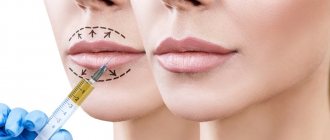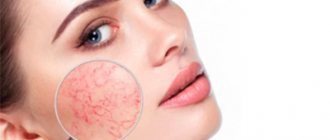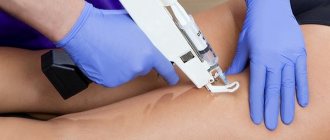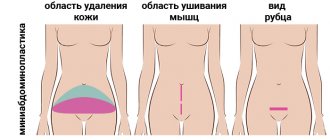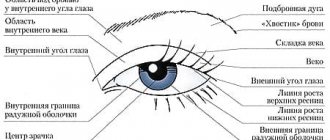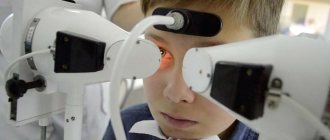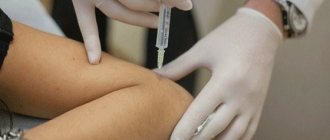For the purpose of aesthetic correction of the face and body, mesotherapy is widely used in cosmetic medicine. This method is based on reducing fat deposits in any area of the body using lipolytic substances. Courses have been developed for conducting operations using substances of varying degrees of impact. Sodium deoxycholate is considered an effective drug.
Efficacy of sodium deoxycholate
The presented chemical combination belongs to a natural substance. The drug exists as a part of the bile of the human body, which is formed in the intestines due to the metamorphosis of the junction of liver cells. The influence of the substance is based on:
- regulation of lipid metabolism;
- transformation of excess mass and elimination;
- regulation of the totality of all chemical processes occurring in the body;
- improving blood circulation.
The effect of therapeutic liposuction using sodium deoxycholate is considered an important factor in body shaping cocktails. An important issue with lipolytics is the transformation of excess fat, which is subsequently excreted by the kidneys. Processes of unification and splitting occur regularly in the body. The normal state depends on their balance, but in isolated cases one of the processes sometimes predominates.
The processes of lipid synthesis can dominate with a sedentary lifestyle and improper food absorption. Thus, a layering of fat occurs. To combat fat deposits, you should inject sodium deoxycholate, and you will learn how to inject the substance in this article. Their use can remove up to 6 cm of fat. If the drug is injected into the required area in the required amount, then under the influence of the injected elements the fat is converted into acids.
Causes of excess weight
Excessive consumption of food is the main problem of the majority of the population. At the same time, cheap and ready-made food products, which contain the majority of harmful elements, are the main culprits in the appearance of excess weight. As a result, it turns out that modern people eat more than they should, while this food is of worse quality. According to statistics, more than 90% of cases of excess weight are associated with a pathology of the balance between energy consumption and energy expenditure.
Many people are genetically inclined to obesity and, accordingly, gain weight more quickly. Failure to comply with necessary physical exercises has a detrimental effect on well-being and contributes to the development of heart disease. Exercise is considered the main method of controlling body weight. In addition, mental factors can influence the formation of excess weight.
Properties and mechanism of action of the drug
This chemical compound is a natural product. Sodium deoxycholate is present in bile in humans and mammals. It is formed in the intestine as a result of chemical and biological transformations from primary bile acids synthesized by liver cells. Its mechanism of action is as follows:
- the sodium salt is transformed into secondary fatty deoxycholic acid;
- the acid is oriented around the double-layer membrane of fat cells;
- the membrane is disorganized and its permeability increases, which allows phosphatidylcholine (a phospholipid acid) to enter the fat cell.
The latter already breaks down lipids (fats), turning them into emulsions. Thanks to this, they enter the intercellular space, are captured by phagocytes and enter the lymph and venous blood, after which they are partially excreted from the body, used to build cells, and are oxidized to release energy.
Thus, the mechanism of action of sodium deoxycholate is a necessary condition for its use in cocktails for the purpose of body correction.
Indications and contraindications
Sodium deoxycholate and phosphatidylcholine for weight loss contribute to a better effect of surgery in certain areas of the body:
- Double chin.
- Scapular areas.
- Knee joints.
- Anterior abdominal wall.
- Hip joints and thighs.
Depending on the likely complications resulting from the procedure, there are a number of contraindications to the drug:
- pregnancy;
- liver and stomach diseases;
- liver dysfunction;
- breastfeeding;
- heart problems;
- personal intolerance to the substance;
- skin diseases in the area where the operation is intended to be performed;
- allergy;
- endocrine diseases;
- the use of chemicals and drugs that inhibit blood clotting activity and the formation of blood clots;
- pathology of the veins, manifested in their expansion, destruction of the valve apparatus;
- problems with immunity.
Lipolitics of indirect action
Unlike the previous category of drugs, indirect lipolytics do not have a direct effect on adipose tissue cells - they do not provoke, but accelerate lipolysis, stimulating the physiological processes accompanying it. So, unlike direct lipolytics, which physically eliminate excess volume, indirect-acting drugs have a more complex and natural effect on tissue. The duration of the course of procedures turns out to be significantly longer, and its effectiveness will depend, among other things, on a number of external factors, including the amount of physical activity.
Indirect lipolytics are used to comprehensively reduce the volume of the figure and combat cellulite. To administer drugs of this type, both classical mesotherapy techniques and microneedling procedures are used, including fractional mesotherapy.
The list of indirect lipolytics includes many drugs that can be divided into two subcategories depending on what conditions accompanying lipolysis they create - energy release or lymphatic drainage.
Type 1: Energy Release
In the process of natural lipolysis, the breakdown of adipose tissue cells is accompanied by the release of energy. Indirect lipolytics of the first type stimulate metabolism in cells in such a way as to accelerate the transport of free fatty acids to cellular energy centers - as a result, lipolysis occurs more intensely and allows you to “burn” more fat cells. In this case, a characteristic physical sensation of warmth occurs in the injection area.
Indirect lipolytics of this type include L-carnitine, caffeine, guarana extract, bromelain, yohimbine, cocoa extract and some other drugs.
Mesotherapy using indirect lipolytics of the first type shows the most pronounced results in combination with moderate physical activity. The ability of these drugs to increase energy production provides greater productivity during training and a more noticeable loss of fat tissue.
Indirect lipolytics of the first type are recommended for the correction of dense cellulite, observed in the initial stages of the formation of the problem. The drug activates trophic processes and improves blood circulation in the problem area, preventing further deformation of fat cells.
Application, side effects
The drug is used in its pure form. The combination of phosphatidylcholine and sodium deoxycholate provides the best results. The needle is inserted 13 mm deep. After the substance is introduced, another 0.1 ml is injected. It is not recommended to increase the dosage of the substance in the cocktail in the following areas:
- face, hands and knee joints - 3-5 ml;
- abdomen, back, thighs - 5-15 ml.
The treatment period lasts from 5 to 15 sessions, and sometimes includes 8 injections. The time between sessions is 10 days. Immediately after the procedure, the doctor simply massages the areas where the substance is introduced for the best distribution. The injection portion of the pure substance should not be higher than 15 ml per session, and the number of injections is once a month.
Sometimes there may be side effects to the drug:
- Minor hematomas and pain in the injection area.
- Irritation, redness and swelling in the area where the substance was introduced.
- Head pain, vomiting for the initial two days.
- Painful condition, temperature rise to 37.5 degrees.
If the operation is administered correctly, there are no violations after the introduction. However, similar negative results are likely:
- purulent inflammation at the injection site when the use of a disinfectant is ignored;
- the appearance of dermatological necrosis due to indiscriminate injection of the substance;
- proliferation of connective tissue with the appearance of scar changes in places where the drug was accidentally introduced;
- the appearance of allergies;
- the appearance of compactions in the areas of penetration, which disappear after repeated surgery.
Most Popular: Selecting the Best Drugstore Creams for Dry Skin
Complications after sodium deoxycholate
When procedures are carried out correctly and contraindications are taken into account, complications after sodium deoxycholate are rare. However, there may be negative consequences such as:
- inflammatory phenomena and suppuration in the injection area with insufficient compliance with the rules of asepsis and antisepsis;
- the appearance of areas of skin necrosis (death) due to accidental administration of the drug into the vessels;
- the development of fibrosis and sclerosis of muscle tissue in places where sodium deoxycholate was accidentally introduced into it;
- development of allergic reactions;
- the formation of infiltrates (seals) at the injection sites, which easily resolve after repeated sessions of superficial massage.
Sodium deoxycholate is a natural remedy. Its use in solutions with other lipolytic drugs has a noticeable effect after the first mesotherapy sessions, which lasts for 1 year. If you follow proper nutrition and physical activity, the effect remains for a long period. It can be used both to prepare for surgical liposuction, and as an independent use for the purpose of “conservative liposuction”. Possible complications can be avoided if procedures are carried out correctly and contraindications are taken into account.
Photos before and after:
How to perform the procedure
When deciding to use injection technology for fat removal, you only need to learn how to correctly use various substances, but also choose a qualified professional. Since the introduction process and the procedure itself are complex, the master will need not only mastery of the technique, but also knowledge of human anatomy. You should also understand how this or that drug functions in order to have a preliminary idea of how the area of the body will look after the operation. Lipolysis occurs in a couple of stages.
A qualified doctor must conduct a preliminary consultation, familiarizing the client with the principles of action of the drugs. The doctor also detects problem areas and, according to this, selects the necessary substance for body correction, setting a date and time for the operation. The selected drug is injected using delicate needles into the subcutaneous fatty tissue of the selected area.
In most cases, the pain is not very severe, since the procedure is practically painful, unlike other treatment methods. When the susceptibility to the drug is too high, the site is treated in advance with an anesthetic drug. After the operation, you need a rest of at least thirty minutes, and in addition, the consumption of 0.5 liters of liquid to accelerate the removal of destruction products.
Recovery takes no more than 2 days and is characterized by slight redness, swelling, soreness of the treated area, burning or numbness at the injection site. It is recommended to apply cold to relieve puffiness.
Patient selection criteria
Cosmetologists have many questions regarding the use of lipolytic substances to correct local fat deposits. The main ones are a competent examination of the patient and the prescription of lipolytic substances. When the patient has general contraindications to mesotherapy, it is necessary to advise other ways to correct the figure.
It should be remembered that this procedure is not considered a method of radical weight loss and is aimed at working only with local fat deposits. Patients with a body mass index of more than 25.0 kg/m2 are prescribed a special course of mesotherapy, but before the start of operations they are introduced to the upcoming results after the procedure. The patient must be aware that weight loss is achieved only by combining surgery with exercise, including proper nutrition. A BMI of more than 30.0 kg/m2 is obesity, which is associated with metabolic pathology and requires diagnostics.
To find out whether surgery is required, you must first find out your body mass index using the formula:
BMI = m/h2,
where m is body weight in kg, h is height in meters.
When the acquired value is from 18.5–24.9 kg/m2, then the patient has normal weight, but with local fat deposits. When the coefficient is from 25.0–29.9 kg/m2, then the patient has excess body weight.
In order to introduce substances into the treatment method as accurately as possible, it is necessary to establish where the patient’s fatty deposits are located, and also to find out the nature of the appearance. Each problematic area reacts to the substances used in its own way:
Adipose tissue not rich in reticular fibers, soft fat in the abdomen and sides. A detailed discussion of the best strategy for dealing with deposits is presented below.
Adipose tissue rich in reticular fibers is concentrated in the thigh area. Excessive accumulation of fat leads to the disease cellulite. The strategy for correcting the symptoms of a cosmetic problem due to structural changes in the subcutaneous layer is not limited to the use of natural injections, but is determined by the totality of the manifestations of the disease. This problem is discussed in specialized articles and methodological recommendations.
If cellulite is present, they begin to correct the signs of appearance, and then move on to correcting fatty deposits, observing the characteristics of the patient’s body:
- At the first diagnosis, diseases and contraindications to a certain substance are discovered.
- Strictly adhere to the previously noted maximum doses of the drug.
- Do not treat more than one fatty area in one operation.
- Provide specifics for working with special substances in different places.
The number of procedures to achieve the effect depends on many personal factors, and are selected exclusively by the doctor in order to avoid unwanted consequences for the body. As a rule, mesotherapy is carried out with an interval between procedures of 7 to 10 days. A complete special course, which provides long-lasting results, consists of 5, 10 or 15 operations. Sometimes two or three procedures are enough for the patient.
The number of injections depends on the body’s reaction from the first procedure. The required result depends on the personal characteristics of the patient’s body. For some, the result lasts for 12 months, then the course must be repeated again. However, for certain patients, repeated treatment may be necessary 6 months after the first course. For other people, a certain effect will last for a year.
Most Popular: Selecting the Best Drugstore Creams for Dry Skin
General information
It already breaks down fats, which in the form of an emulsion enter the lymph and are gradually eliminated from the body. Therefore, sodium deoxycholate is used for figure correction, the main thing is to take into account all the indications and study the method of application.
Sodium deoxycholate is used to treat cellulite, perform liposuction without surgery, and also to prepare for surgical liposuction. That is, the drug helps remove fat deposits in certain areas.
Reference! Sodium deoxycholate is effectively used for figure correction only in combination with other cosmetic preparations.
It is important to understand that this drug will not help if you are overweight. Used as an injection. Widely used to correct fat deposits on the face, growths on the eyelid, the formation of fatty deposits, and stretch marks. With age, some patients experience the growth of fatty matter in the area of the seventh cervical vertebra; with the help of an injection of sodium deoxycholate, this defect can be eliminated.
Skin care after the procedure
No special care is required after receiving the injections. After completing the procedure, you do not need to eat for 3 hours, but it is recommended to drink plenty of liquid. It is prohibited to carry out any other procedures on the appointed day of injection therapy. It is also prohibited to go to the pool, solarium, sauna or gym for at least 3 days after the operation. In addition, it is necessary to refrain from massage for this period of time. However, 3 days after the operation it is necessary to massage the anti-cellulite effect to obtain the best and lasting result.
If mesotherapy is carried out, you should not use chemicals and medications that inhibit the activity of the blood coagulation system. Bruises are treated with special products “Traumel”, “Arnica” or Heparin ointment. Any of the listed creams can be applied after surgery. If necessary, it is recommended to rub the medicine at home. You can use these medications up to 6 times a day until the bruises completely disappear. To strengthen blood vessels, a cosmetologist can prescribe ascorbic acid, as well as products for better tissue microcirculation.
Advantages and disadvantages of the operation
The advantages of the operation may include the fact that the procedure has no age restrictions, and the drug is well tolerated. The operation provides a very long-lasting result compared to other methods. Any area can be treated, which cannot be noted when wrapping in the fight against deposits. Also, the operation is excellent because it does not require forceful loads on the body through endless exercise in the gym to lose weight and improve the condition of the skin. Disadvantages include possible redness of the dermis, dilation of blood vessels and bruising from injections. In addition, the procedure has some contraindications.
Can the drug be used at home?
In the procedure, most patients are deterred not even by significant pain, but by the cost of the operation. It is quite elevated, but fully justifies the result after administration. And we are not even talking about the price of the substance itself, but about the difficulty of carrying out the operation. To correctly administer the drug, you will need a lot of practice in working with substances to be administered, an understanding of the structure of the human body and the details of how the body works, therefore, not all cosmetologists and doctors are ready to carry out the procedure flawlessly. What can we say about home conditions? Naturally, no matter how confident you are in your competence and knowledge, the procedure should be carried out in special cosmetology centers and only under the supervision of a doctor. The use of similar substances in the home is extremely dangerous, even when there is widespread practice in administering injections.



